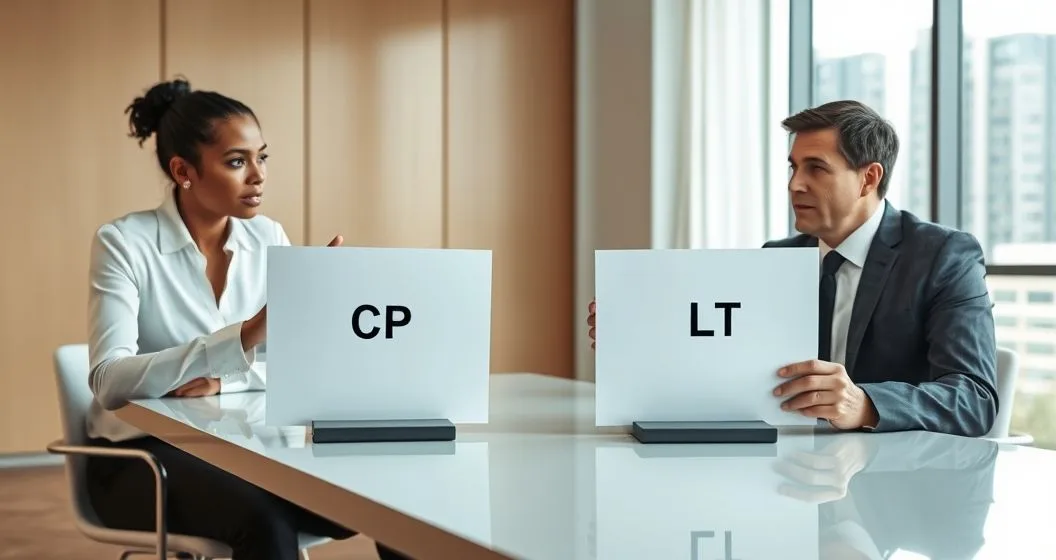Introduction
CP and LT notices are both official IRS communications, but they require different levels of urgency. CP notices are typically generated by automated systems to correct balances, request information, or notify you of adjustments. LT notices indicate the IRS is moving toward enforced collection and usually follow earlier, unanswered communications.
How the two differ
- Purpose:
- CP notices: Informational or corrective (billing, math errors, income mismatch, payment reminders).
- LT notices: Formal intent to take collection action (e.g., file a Notice of Federal Tax Lien or levy bank accounts).
- Urgency:
- CP: Often resolvable with documentation or payment arrangements.
- LT: Requires immediate attention to avoid legal enforcement.
- Typical examples:
- CP: CP14 (balance due), CP2000 (income mismatch), CP 501 (notice of unpaid tax) — see the IRS guide to notices (IRS).
- LT: LT11, LT16 — letters that precede lien or levy actions.
Practical steps when you receive either notice
- Read it fully and note deadlines. Most IRS notices include a contact phone number and a deadline. See IRS: Understanding Your IRS Notice or Letter (https://www.irs.gov/individuals/understanding-your-notice-or-letter).
- Confirm it’s legitimate. Scammers mimic IRS letters. Verify the letter number and contact the IRS using published phone numbers, not numbers on suspicious pages. See our guide on recognizing scam letters: Recognizing Scam Letters vs Official IRS Notices.
- Gather documents. For CP2000 or similar, collect W-2s, 1099s, and bank records to support your position.
- Respond in writing or by phone before the deadline. For CP notices, following the instructions often closes the case. For LT notices, request a hold to discuss collection alternatives.
- Consider collection options. For LT notices, explore an Installment Agreement, Offer in Compromise, or Currently Not Collectible status; IRS Publication 594 explains collections and taxpayer rights (https://www.irs.gov/publications/p594).
Real-world context and examples
- Routine CP example: A taxpayer receives a CP2000 showing unreported income from a 1099. Sending the missing 1099 and an amended return or a letter explaining the discrepancy resolved the issue in my practice within weeks.
- Serious LT example: An LT11 arrived after months of ignored notices; the taxpayer negotiated a short-term payment plan and avoided a bank levy.
Common mistakes to avoid
- Ignoring CP notices because they “look minor.” Small mismatches left unresolved can escalate.
- Assuming LT notices can be ignored; they are a clear warning that enforcement may follow.
- Calling numbers on suspicious third-party sites—always use official IRS contacts.
How to prioritize multiple notices
- Open and date-stamp every notice when received.
- Triage by notice type and deadline; address LT letters first.
- Consolidate documentation and respond to each notice with a clear, concise explanation and supporting documents.
Where to get authoritative help
- IRS resources: Taxpayer Bill of Rights (https://www.irs.gov/taxpayer-bill-of-rights) and Publication 594 for collections.
- Professional help: CPA, enrolled agent, or tax attorney for LT notices or complex disputes. In my 15+ years working with clients, early engagement with a practitioner often prevents enforced collection.
Further reading (internal links)
- Learn how liens are placed and removed: How the IRS Places and Removes Tax Liens: Step-by-Step.
- See a plain-English breakdown of common letters: Common IRS Notices Explained: What Each Letter Means.
Authoritative sources
- IRS, Understanding Your IRS Notice or Letter: https://www.irs.gov/individuals/understanding-your-notice-or-letter
- IRS Publication 594, The IRS Collection Process: https://www.irs.gov/publications/p594
- IRS, Taxpayer Bill of Rights: https://www.irs.gov/taxpayer-bill-of-rights
Professional disclaimer
This article is educational and does not replace personalized tax or legal advice. For actions about specific notices, consult a licensed tax professional or attorney.



